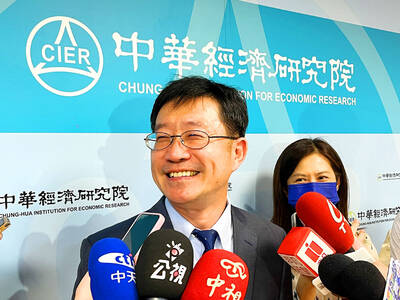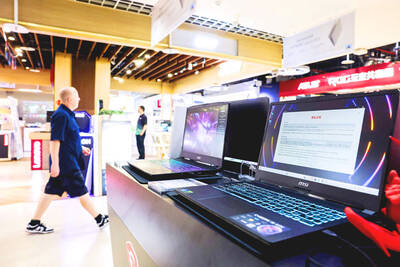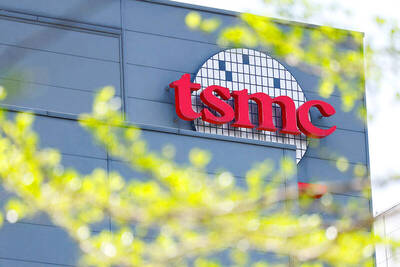Last summer, Xu Demin struggled to cut emissions from his coal-fired factories as part of China’s all-out effort to clean the air for the Beijing Olympics.
He could have simply waited six months. This spring, overseas demand for his farming and construction machinery plummeted, forcing him to close two plants and lay off 300 workers.
The global economic slowdown is helping to accomplish what some in China’s leadership have striven to do for years: rein in the insatiable demand for coal-powered energy that has fed the country’s breakneck growth but turned it into one of the world’s most polluted countries.
Beijing, China’s normally smog-choked capital, is breathing some of its cleanest air in nearly a decade, as pollution-control efforts get a sizable boost from a slowing economy.
“It’s like the sky I saw overseas. I can see clouds. I’ve seen days here like I’ve seen in Europe or the US,” Xu said, his voice echoing in the cavernous space of his idle factory outside Beijing.
In the second half of last year, a period that included the Olympics in August, Beijing recorded its lowest air pollution readings since 2000, data from the Ministry of Environmental Protection showed.
The average monthly air pollution index was 74, about 25 percent lower than the previous seven years. Earlier data were not available.
Experts see several reasons for the improvement, including the relocation of some of Beijing’s dirtiest factories outside the city and the partial continuation of traffic limits imposed for the Olympics.
Perhaps most significant has been the economic downturn. Even elsewhere in China, where no Olympic pollution measures were imposed, the level of dirty air is down.
For now, the cleaner air is a vindication of sorts for Beijing.
Air pollution, while not as low as in August and September when the harshest restrictions were in place, has remained far below recent years. From October through February, the average monthly pollution index was 82.
It’s not just Beijing. Southern China, home to many of the country’s export-producing factories, has seen clear improvement.
Many cities in Guangdong Province, where 62,400 businesses closed last year, have seen a drop in the number of badly polluted days, data on the Guangdong Provincial Environmental Protection Bureau Web site showed.
For example, the factory city of Dongguan reported more than a dozen days in the first half of last year when the air pollution index topped 100, a level considered unhealthy for sensitive groups including infants and the elderly. But in the second half of the year, there were only two such days.
Not all cities saw improvements. But across a sampling of seven key cities, the average number of badly polluted days halved between the first and second half of last year.
A similar phenomenon was seen when the Soviet Union collapsed, causing the industrial haze over the Arctic to drop by nearly 50 percent, said Kenneth Rahn, an atmospheric chemist from the University of Rhode Island who has studied air quality in China.
“In principle, a reduction in economic activity can and will reduce air pollution,” he wrote in an e-mail response. “I would expect something similar for China but of lesser magnitude.”
During boom times, demand for electricity was so high in Guangdong’s Pearl River Delta that companies often endured rotating blackouts. Some installed their own generators, which burned low-grade, dirty fuel.
But since last fall, blackouts have been few and generators are seldom used.
Environmental advocates say the downturn presents an opportunity for the government to move more aggressively to shut the dirtiest plants and enact stricter emissions regulations.
“The fact that the economy has slowed down has made it easier to stick to their plans to consolidate and close plants,” said Deborah Seligsohn, director of the China climate program for the US-based World Resources Institute.
Seligsohn said she is encouraged by the fact that China’s US$586 billion economic stimulus plan includes funding for better technology and infrastructure that could benefit the environment.
In Guangdong, the slowdown could spur long-held plans to transform the region from dirty, labor-intensive manufacturing to cleaner high-tech industries.
Wang Xiaoming (王小明), director of communication for the Beijing Environmental Protection Bureau, said he hopes companies will take advantage of the slowdown to install more energy-efficient and cleaner technology.
“This period is an opportunity for each factory to adjust their production methods. If they were operating at full capacity, they would never have the time for this,” he said.

WEAKER ACTIVITY: The sharpest deterioration was seen in the electronics and optical components sector, with the production index falling 13.2 points to 44.5 Taiwan’s manufacturing sector last month contracted for a second consecutive month, with the purchasing managers’ index (PMI) slipping to 48, reflecting ongoing caution over trade uncertainties, the Chung-Hua Institution for Economic Research (CIER, 中華經濟研究院) said yesterday. The decline reflects growing caution among companies amid uncertainty surrounding US tariffs, semiconductor duties and automotive import levies, and it is also likely linked to fading front-loading activity, CIER president Lien Hsien-ming (連賢明) said. “Some clients have started shifting orders to Southeast Asian countries where tariff regimes are already clear,” Lien told a news conference. Firms across the supply chain are also lowering stock levels to mitigate

IN THE AIR: While most companies said they were committed to North American operations, some added that production and costs would depend on the outcome of a US trade probe Leading local contract electronics makers Wistron Corp (緯創), Quanta Computer Inc (廣達), Inventec Corp (英業達) and Compal Electronics Inc (仁寶) are to maintain their North American expansion plans, despite Washington’s 20 percent tariff on Taiwanese goods. Wistron said it has long maintained a presence in the US, while distributing production across Taiwan, North America, Southeast Asia and Europe. The company is in talks with customers to align capacity with their site preferences, a company official told the Taipei Times by telephone on Friday. The company is still in talks with clients over who would bear the tariff costs, with the outcome pending further

Six Taiwanese companies, including contract chipmaker Taiwan Semiconductor Manufacturing Co (TSMC, 台積電), made the 2025 Fortune Global 500 list of the world’s largest firms by revenue. In a report published by New York-based Fortune magazine on Tuesday, Hon Hai Precision Industry Co (鴻海精密), also known as Foxconn Technology Group (富士康科技集團), ranked highest among Taiwanese firms, placing 28th with revenue of US$213.69 billion. Up 60 spots from last year, TSMC rose to No. 126 with US$90.16 billion in revenue, followed by Quanta Computer Inc (廣達) at 348th, Pegatron Corp (和碩) at 461st, CPC Corp, Taiwan (台灣中油) at 494th and Wistron Corp (緯創) at

NEGOTIATIONS: Semiconductors play an outsized role in Taiwan’s industrial and economic development and are a major driver of the Taiwan-US trade imbalance With US President Donald Trump threatening to impose tariffs on semiconductors, Taiwan is expected to face a significant challenge, as information and communications technology (ICT) products account for more than 70 percent of its exports to the US, Chung-Hua Institution for Economic Research (CIER, 中華經濟研究院) president Lien Hsien-ming (連賢明) said on Friday. Compared with other countries, semiconductors play a disproportionately large role in Taiwan’s industrial and economic development, Lien said. As the sixth-largest contributor to the US trade deficit, Taiwan recorded a US$73.9 billion trade surplus with the US last year — up from US$47.8 billion in 2023 — driven by strong